In the present times, generating organic traffic through Facebook has become increasingly difficult. With Facebook restricting the reach of pages to under 2%, and the existence of over 80 million competing pages, every post is a challenge. Hence, to drive traffic effectively on Facebook, one must put in extra effort to enhance the links posted.
One approach to achieve this is by improving the images used in Facebook links, as they occupy a significant portion of the post and draw attention away from the text.
By creating eye-catching Facebook link images and optimizing them for clicks, one can increase their visibility and generate more traffic. In this regard, today, I will demonstrate how to design a Facebook link image that attracts more clicks. Additionally, I will provide guidance on how to optimize your website using these images to drive traffic over the long run.
Creating Facebook Link Images that Attract Clicks
To develop clickable images, the crucial aspect is to align them with the blog post or landing page being promoted. By creating a design that garners attention and persuasive text on the image, one can successfully advertise the page and drive traffic. The following steps can help you achieve this.
Begin by opening an image editing tool, such as Canva, which is a free tool. Then, select a Facebook ads template with an image size of 1200 x 628 pixels, as this ratio of 1.91:1 is recommended by Facebook.
By embedding images of a specific size on your webpage and setting the relevant meta tags for sharing, you can ensure that a large thumbnail image appears as your Facebook post image. It is not mandatory for the image size to be as large as 1200 x 628 pixels; the minimum recommended size is 560 x 292 pixels.
To create your Facebook link image, select a template or upload your own photo. It is advisable to choose a template and customize the colour scheme and images to suit your preferences. Canva offers a wide range of both free and paid templates.
Next, modify the text on the image. To drive traffic through Facebook post images, it is essential to promote the page or blog post effectively with well-written copy. A persuasive title alone can often suffice, especially if you have already put in the effort to craft one.
Once you have designed the initial version of the image, proceed to create additional ones. You can perform split-tests on these images to determine which ones yield the best results. However, it is recommended to make minimal changes in each version, such as the font, font size, or colour scheme. Making too many modifications can hinder identifying the specific factor that contributes to positive or negative results.
Adding Images to Your Page and Meta Tags for Optimal Impact
It is understandable if you are uncertain which image will yield optimal results. However, you should not rely on guesswork and add one image to your page and meta tags for experimentation. Doing so can increase traffic, and visitors may share your post directly from your website. It is crucial to ensure that your Facebook post receives as many clicks as possible in this scenario. Thus, adding a temporary link image to the tags can prove significantly beneficial.
You can accomplish this task by adhering to Facebook’s guidelines for adding an image to the tags. If you run a WordPress blog, you can alternatively use plugins such as Yoast or Social Warfare.
Conducting Split Tests on Images Using Organic and Paid Methods
To evaluate the effectiveness of the images you created, it is recommended to conduct split testing using both organic and paid methods.
For organic testing, you can utilize ShareKit, which permits you to customize the Facebook link image, title, and description for the links you share on Facebook. With this tool, you can generate multiple custom links for the same landing page URL, each with different images, titles, and descriptions.
To begin, create several customized URLs utilizing the various images you produced and post them on your Facebook page over a month. ShareKit will track their performance and reveal which image yielded the most clicks.
Instead of focusing on likes and comments, which don’t matter in this case, your goal is to determine which image generates the most traffic. Therefore, it’s essential to prioritize clicks and track their performance. Another way to assess the effectiveness of Facebook link images at driving traffic is to run split tests with short-term Facebook ads. Tools like AdEspresso make this process simple.
Adding the Best Performing Image to Your Landing Page
After determining which image produced the best results, you can easily replace it with the image you previously added to your meta tags.
To summarise, these are the four steps to follow when creating Facebook link images that drive more clicks. While initially challenging to determine the most effective image types, continuous experimentation will eventually reveal a pattern and allow for better predictions. This eliminates the need to run tests each time a thumbnail image is created.






